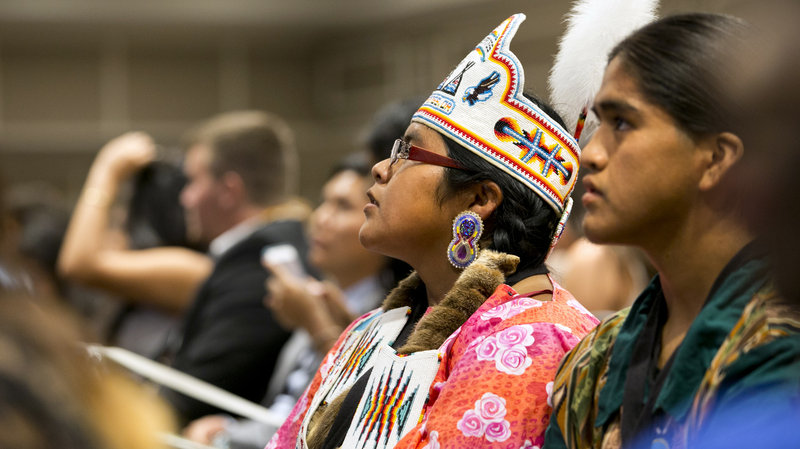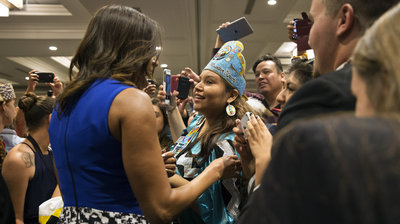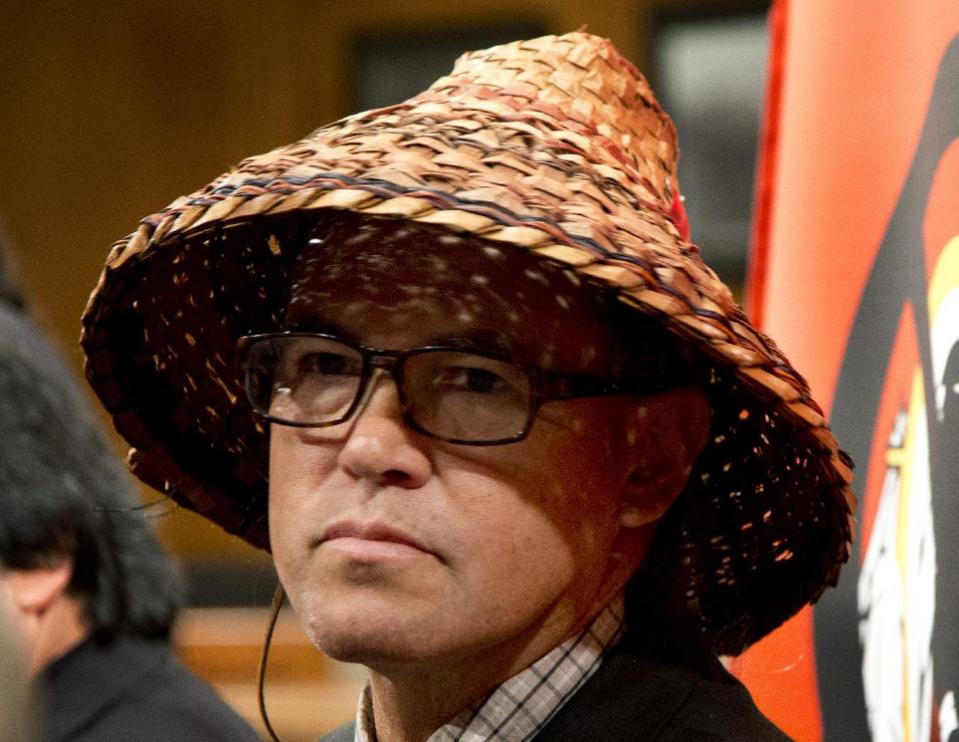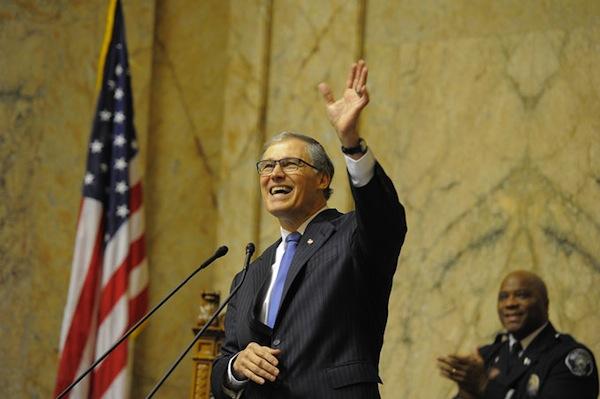Funds will enable tribes to plan for directly operating BIE-funded schools on their lands and improving student educational outcomes
Source: U.S. Department of the Interior
WASHINGTON, D.C. – Assistant Secretary – Indian Affairs Kevin K. Washburn today announced that grants ranging from $25,000 to $150,000 per fiscal year are available for federally recognized tribes and their education departments. The grants are designed to help tribes assume control of Bureau of Indian Education (BIE)-funded schools in their communities, promote tribal education capacity, and provide academically rigorous and culturally appropriate education to Indian students on their reservations and trust lands.
Eligible tribal governments may apply for these grants by responding to the Request for Proposals that the BIE published on May 15, 2015, in the Federal Register.
“This grant program reflects President Obama’s commitment to tribal self-governance and self-determination, and will support tribal educators who best understand the unique needs of their communities as they strengthen their capacity to assume full control of BIE-funded schools on their reservations,”said Secretary Jewell, who chairs the White House Council on Native American Affairs. “It is a critical step in redesigning the BIE from a direct provider of education into an innovative organization that will serve as a capacity-builder and service-provider to tribes with BIE-funded schools.”
“With this announcement, we are taking the next major step in our efforts to return the education of Indian children to their tribes,” Assistant Secretary Washburn said. “We understand that tribal leaders, educators and parents have the greatest need to ensure that their children receive a world-class education, and with this effort, we will see to it that tribes can assume total control over the BIE-funded schools in their communities to improve the educational outcomes for their students. We’re grateful Congress understands the importance of this process and appropriated funding to support this effort.”
“This grant solicitation carries out recommendations of Secretary Jewell and Education Secretary Arne Duncan’s Blueprint for Reform to transform the Bureau of Indian Education from a school administrator into a capacity builder and service provider to support tribes in educating their children and youth,” said BIE Director Dr. Charles M. “Monty” Roessel. “These grants will help tribes and their tribal departments of education to assume control of the BIE-funded schools serving their communities.”
President Obama established the Council as part of his commitment to engage in a true and lasting government-to-government relationship with federally recognized tribes in a more coordinated and effective manner, including promoting and sustaining prosperous and resilient tribal communities.
Jewell then issued a Secretarial Order to begin restructuring BIE from solely a provider of education to a capacity-builder and education service-provider to tribes. The goal of this transformation is to give tribes the ability themselves to provide an academically rigorous and culturally appropriate education to their students, according to their needs.
The Blueprint made several recommendations regarding the BIE’s budget. Interior should invest in the school system’s infrastructure, including new school construction, and align its budget to support tribal self-determination by requesting and increasing tribal grant and Tribal Grant Support Costs for tribally controlled grant schools.
Under the solicitation announced today, grants will range from $25,000 to $150,000 per fiscal year depending on the project, number of educational programs impacted, project design, and expected outcomes. Subject to the availability of appropriated funds, grants will be provided for three years and, depending on performance, may be renewed for additional two-year terms.
Grant funds will support program goals for the following areas that promote tribal education capacity-building:
· To provide for the development and enforcement of tribal educational codes, including tribal educational policies and tribal standards applicable to curriculum, personnel, students, facilities, and support programs;
· To facilitate tribal control in all matters relating to the education of Indian children on reservations and on former reservations in Oklahoma; and
· To provide for the development of coordinated educational programs on reservations and on former reservations in Oklahoma by encouraging tribal administrative support of all BIE-funded educational programs, as well as encouraging tribal cooperation and coordination with entities carrying out all educational programs receiving financial support from other federal agencies, state agencies or private entities.
Top priority will be given to applicants that meet the following conditions:
· Serves three or more BIE-funded schools (less priority will be given if the applicant has less than three schools, but with at least one BIE-funded school).
· Provides coordinating services and technical assistance to all relevant BIE-funded schools.
· Monitors and audits its grant funds by or through its Tribal Education Department (TED)
· And offers a plan and schedule that provides for:
o Its TED to assume all assets and functions of the Bureau agency office associated with the tribe to the extent the assets and functions relate to education;
o The termination by the BIE of all such functions and office at the times of such assumption; and
o The assumption to occur over the term of the grant, unless mutually agreeable to the tribal governing body and the Assistant Secretary – Indian Affairs, the period in which such assumption is to occur may be modified, reduced or extended after the initial year of the grant.
The BIE will assist tribes in the development and operation of TEDs for the purpose of planning and coordinating all educational programs of the tribe. Each proposal must include a project narrative, a budget narrative, a work plan outline, and a project coordinator to serve as the point of contact for the program. The project coordinator is ultimately responsible for ensuring that the TED fulfills the obligations of its grant.
The BIE will provide pre-grant application training at several sites to support tribes and TEDs in applying for grants. Details on location and times will be made available here.
The BIE oversees 183 elementary and secondary schools, located on 64 reservations in 23 states, serving more than 48,000 students. Of these, 59 are BIE-operated and 124 are tribally operated under Indian Self Determination and Education Assistance Act contracts or Tribally Controlled Schools Act grants. BIE also funds or operates off-reservation boarding schools and peripheral dormitories near reservations for students attending public schools.














